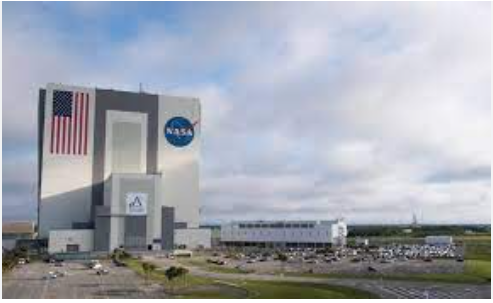National Aeronautics and Space Administration
The National Aeronautics and Space Administration (NASA) is the space agency of the United States federal government responsible for the civilian space program, aeronautics research, and space research. NASA was established in 1958, succeeding the National Advisory Committee for Aeronautics (NACA), to give the U.S. space development effort a distinctly civilian orientation, emphasising peaceful applications in space science.
History
NASA was created in response to the Soviet Union’s launch of its first satellite, Sputnik 1, in 1957. The creation of NASA was a part of the Space Race between the United States and the Soviet Union. The Space Race was a 20th-century competition between the two nations for dominance in spaceflight capability. It had its origins in the ballistic missile-based nuclear arms race between the two nations following World War II.
NASA inherited NACA’s X-15 experimental rocket-powered hypersonic research aircraft, as well as its XB-70 Valkyrie, a strategic bomber program that was cancelled by the Kennedy administration in 1961. NASA has conducted many manned and unmanned spaceflight programs throughout its history.
Notable Programs and Missions
- Apollo Program (1961-1972): One of NASA’s most famous programs was the Apollo program, which resulted in American astronauts making a total of 11 spaceflights and walking on the moon. The first manned Apollo mission, Apollo 7, was flown by Wally Schirra, Donn Eisele, and Walter Cunningham in October 1968. The first moon landing took place on July 20, 1969, on the Apollo 11 mission. Neil Armstrong and Buzz Aldrin walked on the lunar surface while Michael Collins remained in lunar orbit in the command and service module.
- Space Shuttle Program (1972-2011): After the Apollo program, NASA developed the Space Shuttle, the first orbital spacecraft designed for partial reusability. It carried a crew of up to eight astronauts and up to 50,000 pounds (23,000 kg) of payload into low Earth orbit (LEO). The Shuttle was launched vertically, like a conventional rocket, with two solid-fuel launch rockets, and an external liquid-fuel tank. It landed as a glider and was reused for subsequent flights.
- International Space Station (1998-present): The International Space Station (ISS) combines NASA’s Space Station Freedom project with the Soviet/Russian Mir-2 station, the European Columbus station, and the Japanese Kibō laboratory module. NASA originally planned in the 1980s to develop Freedom alone, but U.S. budget constraints led to the merger of these projects into a single multi-national program in 1993, managed by NASA, the Russian Federal Space Agency (RKA), the Japan Aerospace Exploration Agency (JAXA), the European Space Agency (ESA), and the Canadian Space Agency (CSA). The station consists of pressurised modules, external trusses, solar arrays, and other components, which were manufactured in various factories around the world and have been launched by Russian Proton and Soyuz rockets, and the U.S. Space Shuttles.
- Mars Exploration Program : NASA’s ongoing Mars Exploration Program is a long-term effort to explore the planet Mars, which has included the Opportunity and Curiosity rovers, the Mars Reconnaissance Orbiter, and the InSight lander, among other missions. NASA’s Mars 2020 mission includes the Perseverance rover and the Ingenuity helicopter drone, which landed on Mars in February 2021.
- James Webb Space Telescope: The James Webb Space Telescope (JWST) is a space telescope that launched on 25 December 2021. It is designed primarily to conduct infrared astronomy. The telescope is named after James E. Webb, who was the administrator of NASA from 1961 to 1968 during the Mercury, Gemini, and Apollo programs.
NASA Facilities
NASA Headquarters in Washington, D.C. provides overall guidance and direction to the agency. NASA’s Shared Services center is located on the grounds of the John C. Stennis Space Center near Bay St. Louis, Mississippi. Construction and launch facilities are maintained at NASA’s 10 field centres:
- Ames Research Center, Moffett Field, California
- Armstrong Flight Research Center, Edwards Air Force Base, California
- Glenn Research Center, Cleveland, Ohio
- Goddard Space Flight Center, Greenbelt, Maryland
- Jet Propulsion Laboratory, near Pasadena, California
- Lyndon B. Johnson Space Center, Houston, Texas
- John F. Kennedy Space Center, Cape Canaveral, Florida
- Langley Research Center, Hampton, Virginia
- Marshall Space Flight Center, Huntsville, Alabama
- John C. Stennis Space Center, Bay St. Louis, Mississippi
NASA also has seven test and research facilities across the United States.


